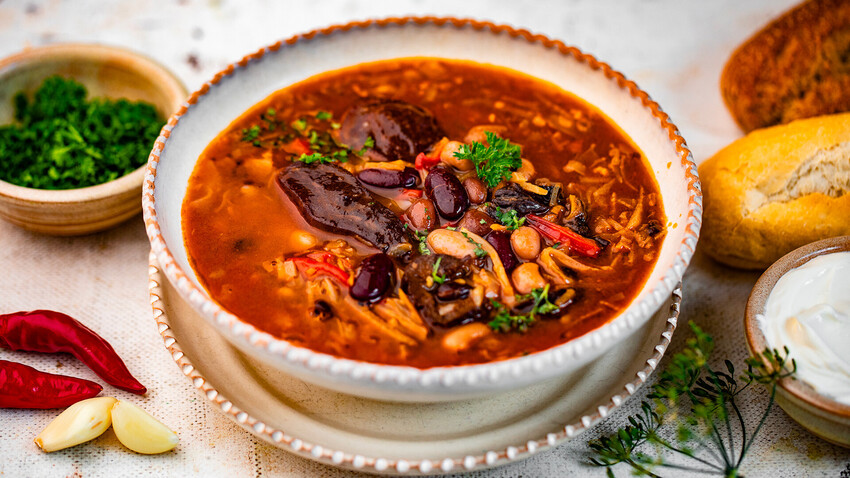
Soup that you’ll eat to the last drop.
Yulia MulinoOf course, borsch is a favorite first dish in Russia, and manifests itself in unique ways in each region. If Moscow borsch has a bright crimson hue because of the abundance of brown beets, the southern style of borsch has a warmer orange tone due to the predominance of tomatoes as a major ingredient.
In Kuban, borsch first appeared in the 18th century with the arrival of the Cossacks, who mostly cooked an Ukrainian version of borsch. Over time, the recipe for Kuban borsch has undergone a number of changes. For example, the beets used in Kuban have lighter veins, so the color of the broth is lighter.
The southern regions are rich in vegetables such as tomatoes and peppers, both sweet and hot. Therefore, Kuban borsch more often uses peppers and fresh tomatoes rather than concentrated tomato paste.
Proximity to the Caucasus region has also left its influence on borsch. Beans and prunes are widely used in the local cuisine. In this type of borsch, beans are used in place of or in addition to potatoes. Prunes give additional sweetness.
With beans and prunes the borsch becomes a rich and nourishing dish, and is suitable for vegans or people who are fasting. However, please note that more often borsch is cooked in meat broth. And what Caucasian dish doesn’t have hot spice? What makes Kuban borsch especially spicy is the addition of "ajika", a hot red pepper sauce.
Kuban borsch is a thick, flavorful dish, a hearty meal, full of important minerals and vitamins that are needed for a healthy body. The locals in Kuban will cook it every day and on holidays.
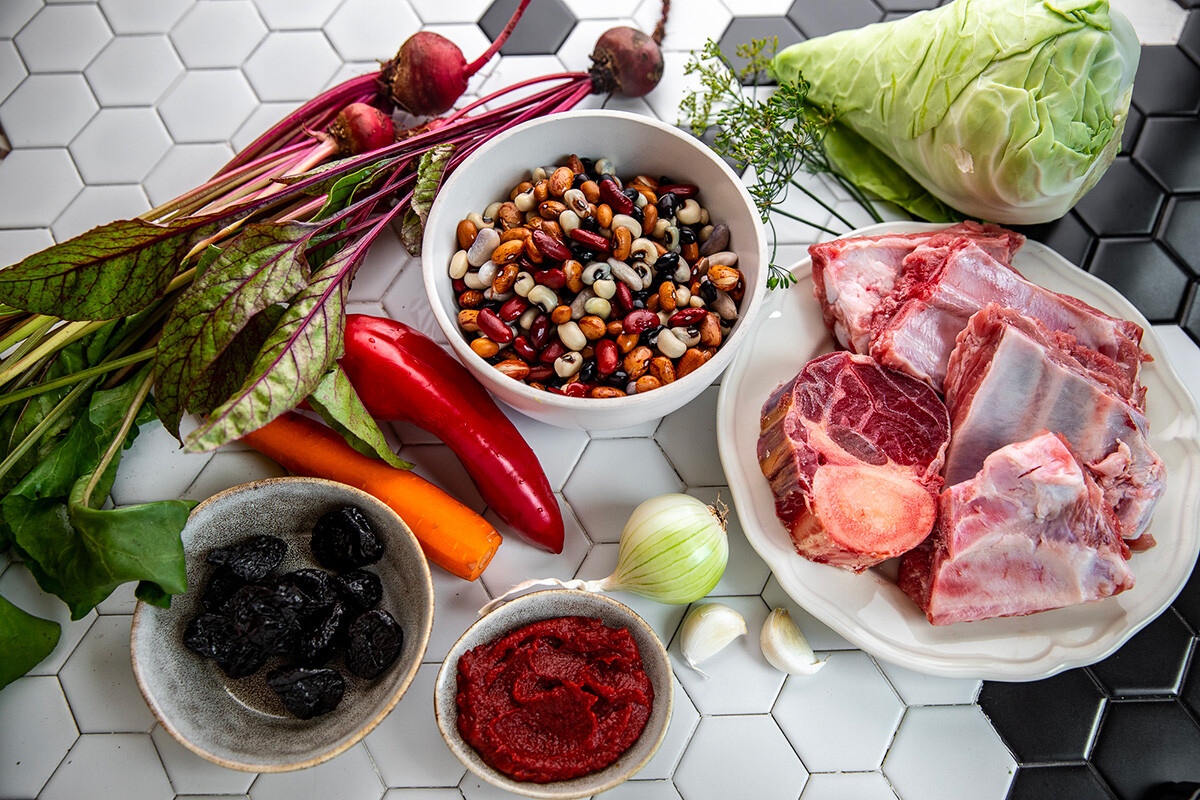
1. Soak the dry beans, follow the instructions on the package. I soaked the mixed beans for 8 hours. If you want a lighter broth, choose white beans.
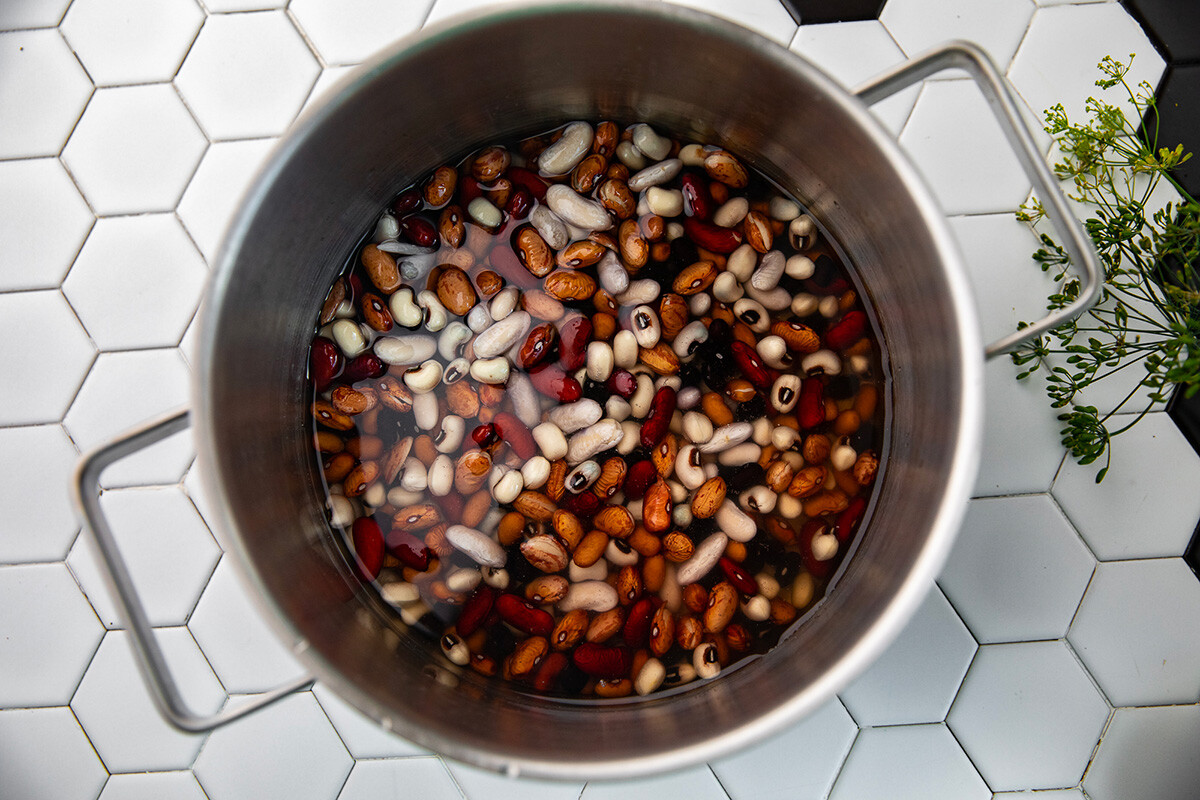
2. Pour the saturated (after 8 hours) beans and beef in cold water; add bay leaf, salt, pepper and cook for 120-180 minutes (depending on the size of the piece of meat and type of beans). The marrow of the meat bone should be boiled and the meat should be soft. I also prepared pork ribs for the broth, but then I calculated that the broth was already thick and decided not to use them. If you want to enrich your dish, add the pork after 60-100 minutes of cooking the beef, and cook it for at least an hour.
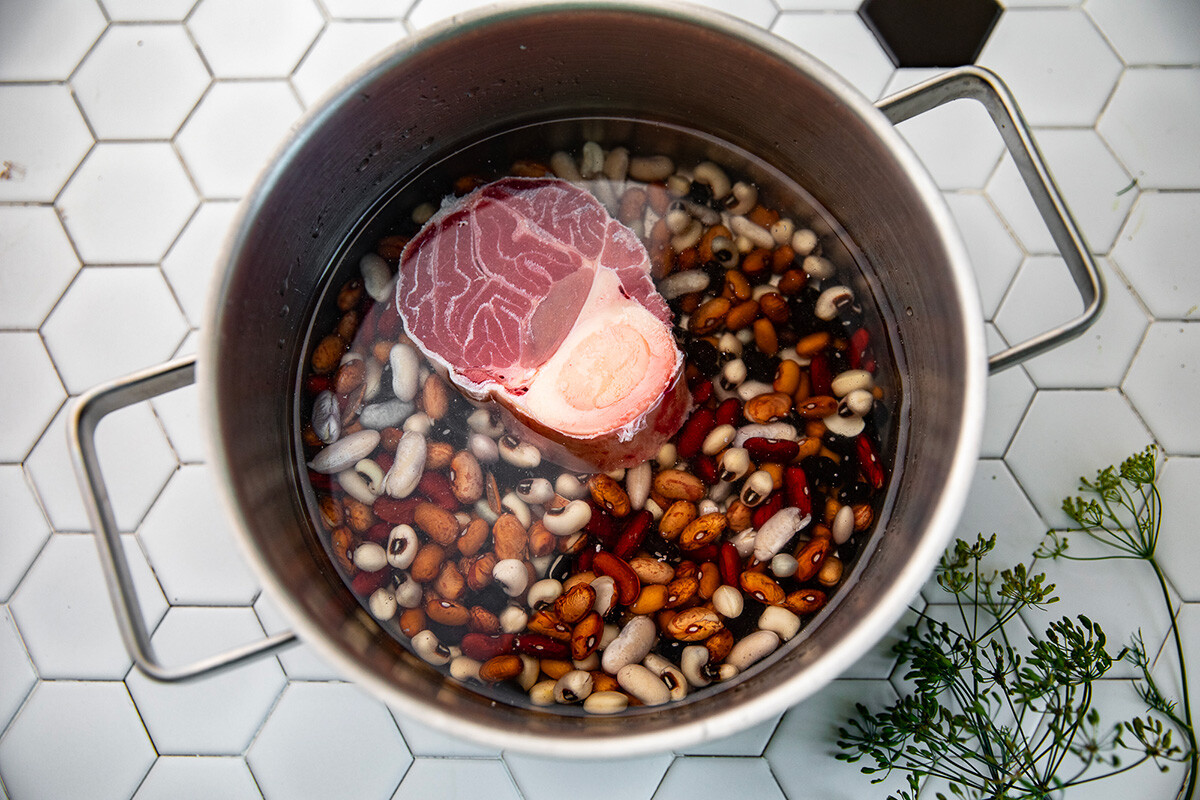
3. While the broth is cooking you can prepare the rest of the ingredients. Slice carrots, onions and red bell peppers; salt and fry in vegetable oil until soft. Set aside in a separate bowl and use the same pan for the beet roast.
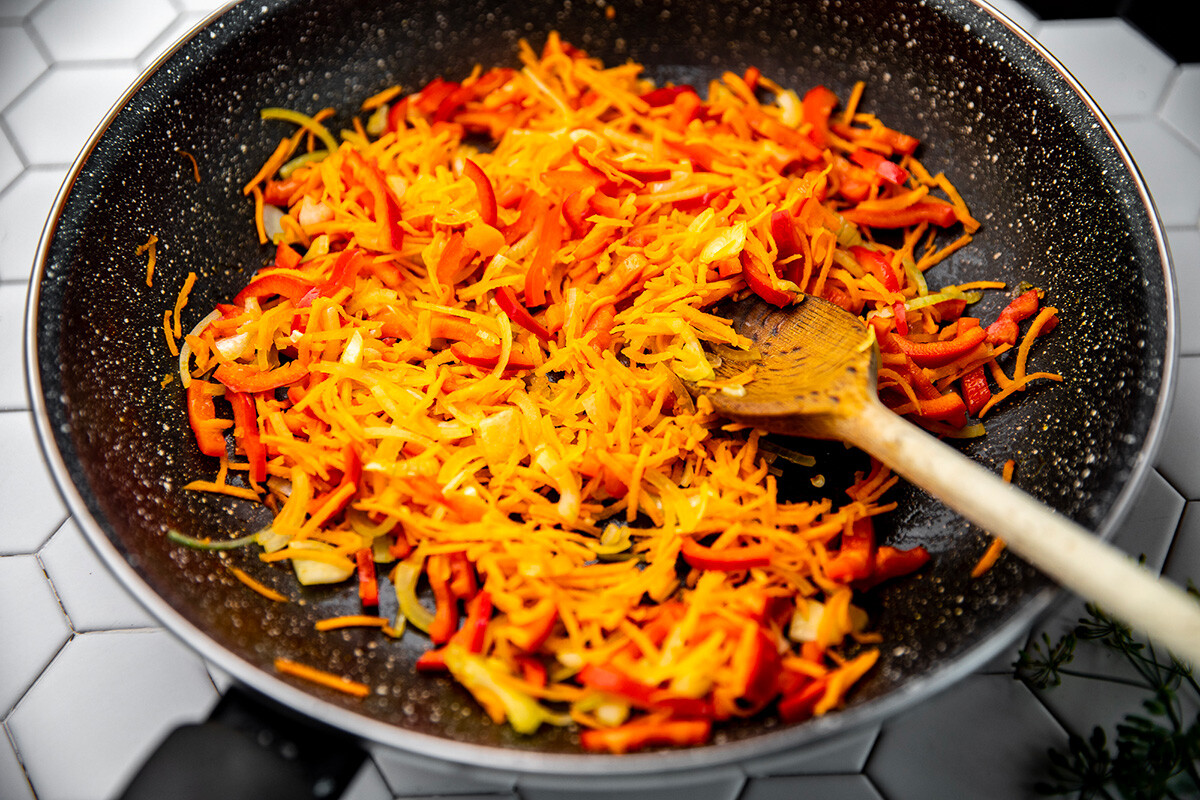
4. I used rainbow beets from my vegetable garden. If you can't find any, you can use regular ones. Peel and chop the beets and fry them in oil. Add grated fresh tomatoes, tomato paste, and a scoop of broth (if it sticks). At this stage you can add ajika, hot pepper paste or just finely chopped hot pepper. I didn't add any because of the mild tastes of my family. When the beets soften, turn off the burner.
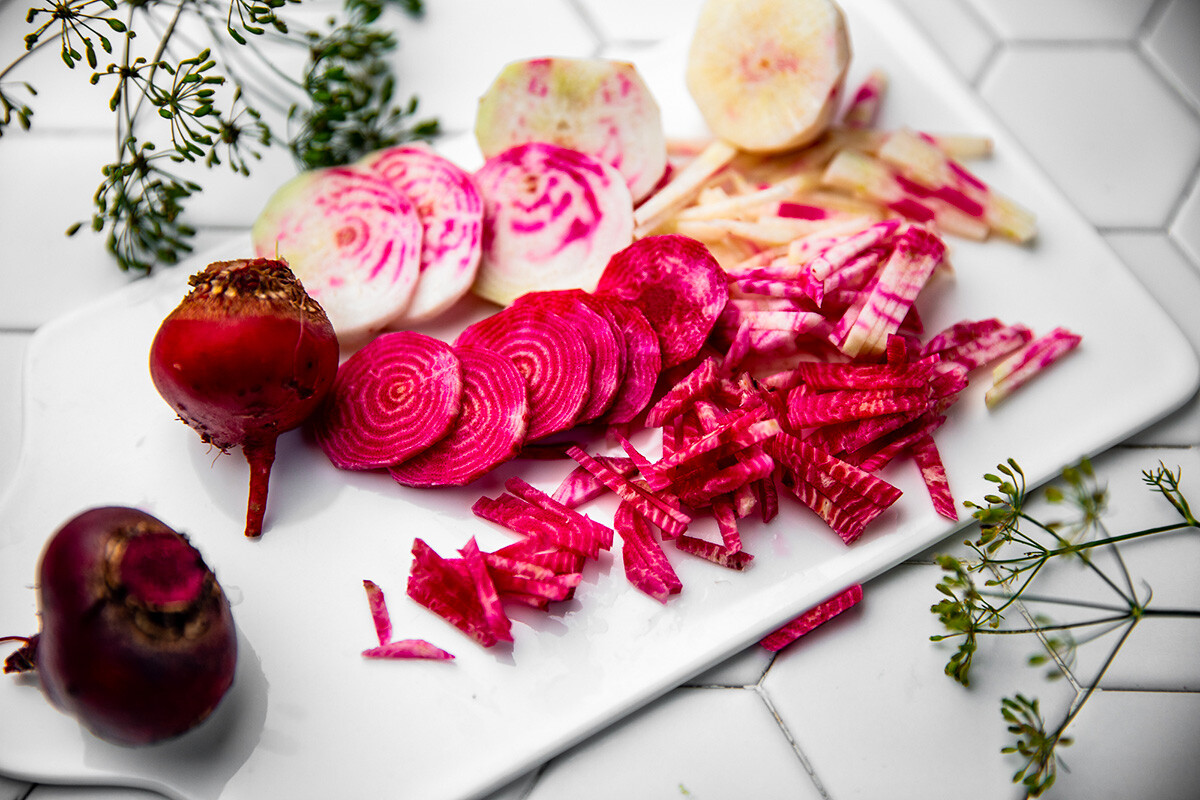
5. Shred the cabbage into fine julienne strips. Add it to the broth when it's almost ready. After 10 minutes add the two starters (carrot and beet) - cook for another five minutes.

6. The last step is to add the chopped prunes and crushed garlic. I used some dill and another fresh bay leaf. Keep on low heat for another 5 to 7 minutes and turn off. The soup should infuse for at least a day before serving.
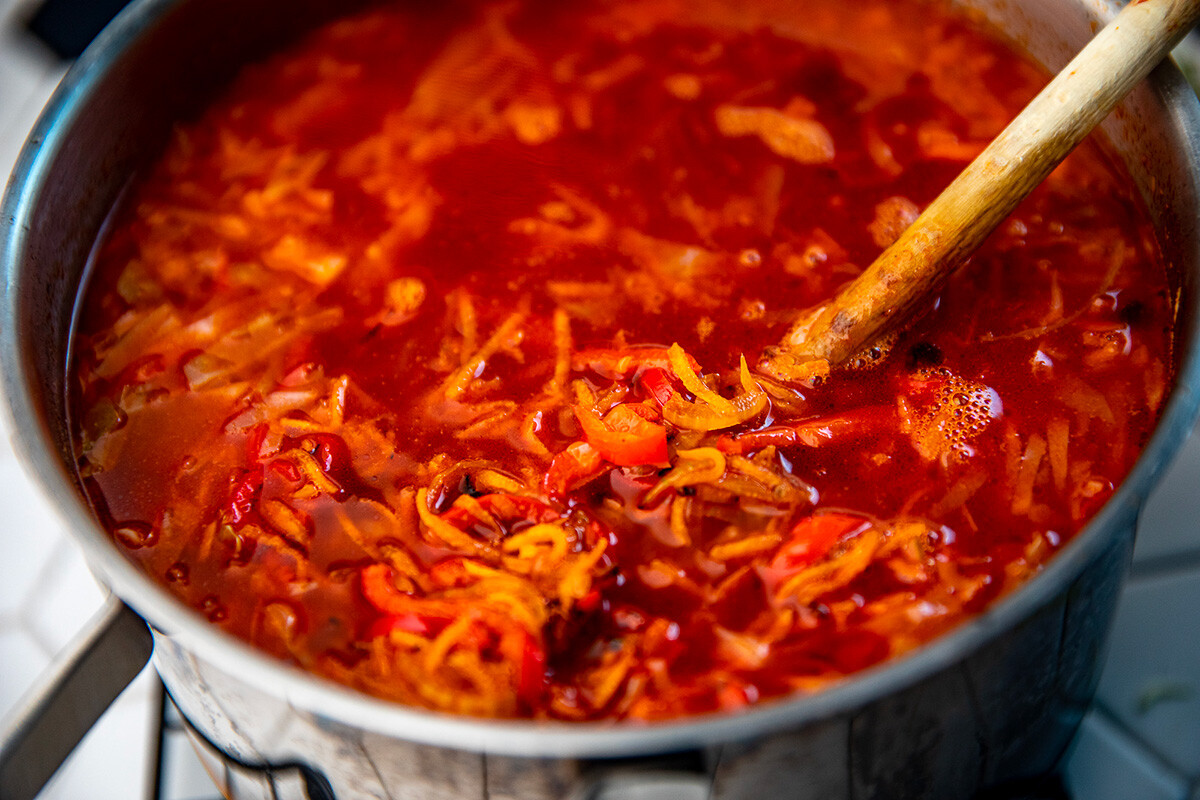
7. Serve Kuban borsch with sour cream and the herbs, green onions, and hot peppers. You can also serve it with a piece of soft white bread and lard.
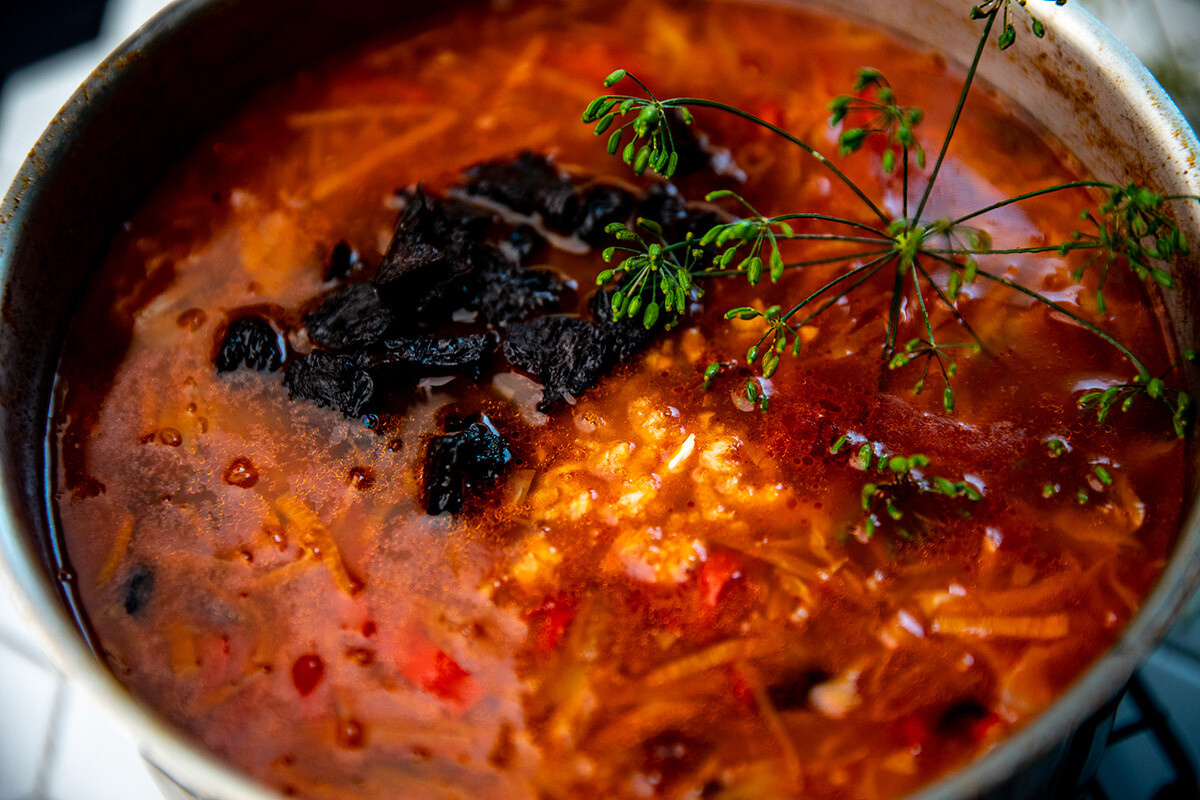
8. Enjoy this sumptuous southern classic!
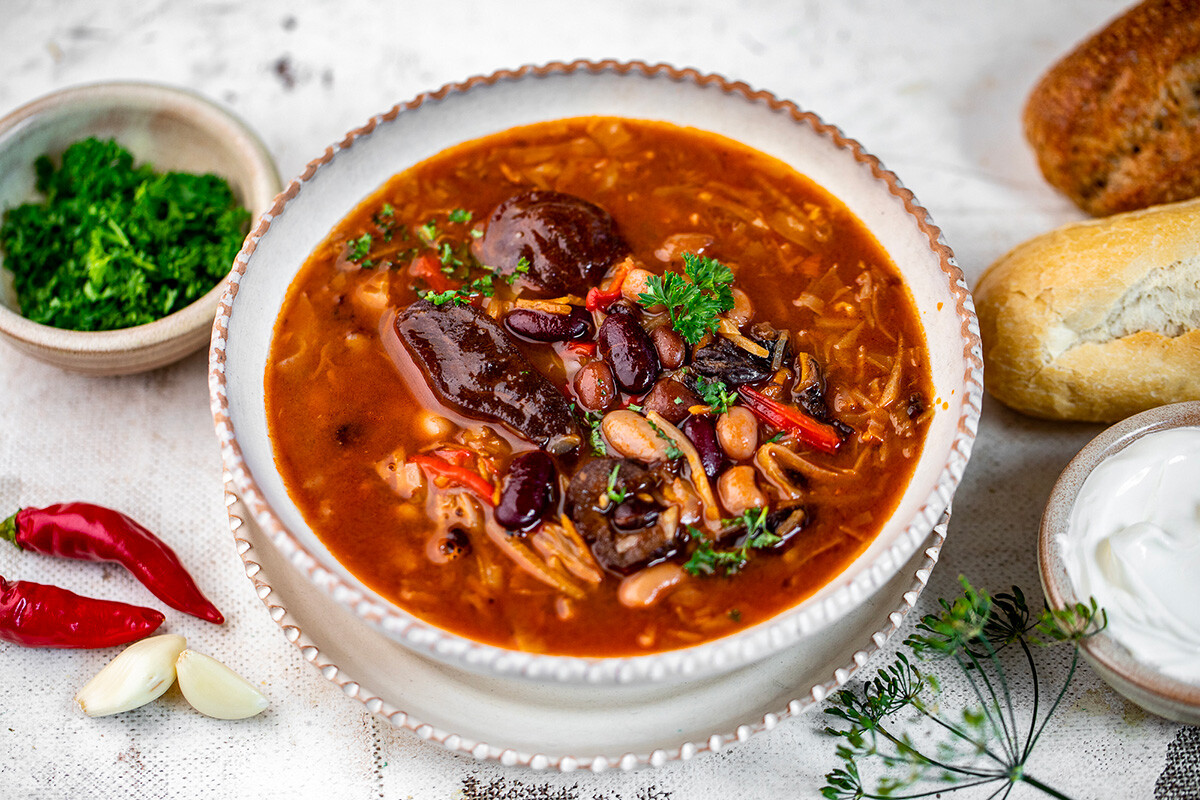
Dear readers,
Our website and social media accounts are under threat of being restricted or banned, due to the current circumstances. So, to keep up with our latest content, simply do the following:
If using any of Russia Beyond's content, partly or in full, always provide an active hyperlink to the original material.
Subscribe
to our newsletter!
Get the week's best stories straight to your inbox